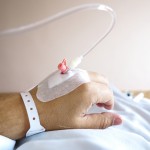
Out in the woodland we are pleased that recent advances in medical care mean that more patients are surviving critical illnesses within intensive care units (ICU). “But what does that have to do with the Mental Elf?” I hear you say. Well, we Mental Elves are wondering whether this advancement in medical technology and technique are actually putting people at risk of subsequent psychiatric morbidity.
Critically ill patients are exposed to stress including pain, respiratory distress and delirium, all of which may impact their subsequent mental health. Several studies of psychological sequelae of intensive care suggest that patients may develop a range of psychiatric disorders, including post traumatic stress disorder, anxiety and depression. However, a good understanding of the burden of psychiatric illness prior to critical illness, as well as the magnitude of increased risk of psychiatric illness following critical illness has not yet been identified.
That is until March of this year when JAMA published the results of a large Danish cohort study by Wunsch et al, which looked at the burden of psychiatric illness and psychoactive medication prescriptions prior to nonsurgical critical illness, as well as whether the risk of psychiatric illness and psychoactive medication use after nonsurgical critical illness was increased among patients with no prior psychiatric history.

The Danish National Registries provide large cohort data
Methods
The study used the Danish National Registry of Patients and Danish Psychiatric Central Registry to identify and populate the cohort groups.
Critically ill patients between 2006-2008 were identified, with follow-up through 2009. Two matched comparison cohorts were identified: one from hospitalized patients and one from the general population. Psychiatric diagnosis and psychoactive medication use was identified during the 5 years prior to the critical illness and 1 year following.
The 2 main outcomes were any psychiatric diagnoses by psychiatrists and any redeemed prescriptions for a psychoactive medication. Secondary outcomes included specific psychiatric disease categories and medication types.
Results
Between 2006 and 2008, 24,179 nonsurgical patients admitted to a Danish ICU received mechanical ventilation. More than half were older than 65 years and 40.8% had no Charlson comorbidities (an index measure of life expectancy). Approximately half (52.5%) required vasopressor or inotropic support while in the ICU, and many patients (29.5%) had a hospital stay of 4 or more weeks.
1 year/5 years prior to ICU admission:
- 2.9%/6.2% patients had 1 or more psychiatric diagnoses
- Matched hospital cohort : 2.3%/5.4% (p<0.001)
- Matched population cohort: 0.8%/2.4% (p<0.001)
- There was no difference in psychoactive medication prescription between matched hospital and ICU admission groups
Of the patients who survived to hospital discharge 9,912 (59.2%) had no history of psychiatric diagnosis, or prescription of psychoactive medication in the five years prior to hospital. This group was followed up for 1 year.

Critical illness may be improved but what other damage is left?
1 year following ICU admission:
- 15.7% patients had died
- Mechanical ventilation patients had the highest risk of new psychiatric diagnosis, compared to matched hospital and general population cohorts
- Hazard ratios (HR) were highest in the first 3 months following discharge, but no differences were found in the last 3 months of the year
- The cumulative incidence of a new psychoactive prescription was higher in the ventilated patients than the matched hospital cohort, in the first 3 months, but decreased to a similar risk by the last 3 months
- The risk compared with the general population was very high for the first 3 months, remaining higher in the last 3 months
Type of psychiatric diagnosis:
- New diagnoses of mood disorders were increased in the first 3 months after discharge in the cohort of patients receiving mechanical ventilation relative to the matched hospital cohort (adjusted HR, 4.79; 95%CI, 1.94 to 11.81; P < .001)
- Anxiety disorders were markedly increased relative to the matched general population cohort (adjusted HR, 35.59; 95%CI, 10.43 to 121.40; P < .001) in the first 3 months following hospital discharge
- Differences between the cohort of patients receiving mechanical ventilation and the matched hospital cohort had resolved by 9 to 12 months but remained increased relative to the matched general population cohort
Categories of psychoactive medications:
- The risk of a prescription for antipsychotics was highest for the patients receiving mechanical ventilation relative to the matched hospital cohort in the first 3 months (adjusted HR, 2.62; 95% CI, 1.83 to 3.76; P < .001)
- Compared with the matched general population cohort, the greatest increase was observed in prescriptions for hypnotics: 10.5% vs 0.4% (adjusted HR, 29.33; 95% CI, 23.81 to 36.12;P < .001)

Risks of psychiatric illness and psychotropic medication increase post ICU
Conclusions
This large, well followed up cohort study has few limitations (which are discussed in the paper but tend the results towards the null hypothesis and if anything imply the effects may be larger), has shown that nonsurgical patients admitted to ICUs who received mechanical ventilation have a higher burden of psychiatric diagnoses than either matched hospitalised patients or members of the general population in the 5 years preceding critical illness and had higher rates of psychoactive medication prescriptions compared with the general population.
Patients receiving mechanical ventilation with no prior psychiatric history who survived to hospital discharge were at increased risk of new psychiatric diagnoses and psychoactive medication prescriptions. This increased risk was most pronounced in the first few months after the critical illness and resolved by the end of the first year of follow-up.
…our data suggest both a possible role of psychiatric disease in predisposing patients to critical illness and an increased but transient risk of new psychiatric diagnoses and treatment after critical illness.
Although the absolute risks were low, given the strong association between psychiatric diagnoses and poor outcomes after acute medical events (such as myocardial infarction and surgery) the data suggests that prompt evaluation and management of psychiatric symptoms may be an important focus for future interventions in this high-risk group. Prescriptions for psychoactive medications (without concomitant care by psychiatrists) also highlight the need for further research to understand patterns of psychoactive medication needs and use among survivors of critical illness.
Links
Wunsch H, Christiansen CF, Johansen MB, Olsen M, MD, Ali N, Angus DC, Sørensen HT. Psychiatric diagnoses and psychoactive medication use among non surgical critically ill patients receiving mechanical ventilation. JAMA. 2014;311(11):1133-1142.

Critical illness and risk of psychiatric diagnosis: Out in the woodland we are pleased that recent advances in… http://t.co/41eN8QboBh
@LiaisonLawson on a new study of premorbid psychiatric risk & ICU admission, plus psychiatric risks after discharge http://t.co/fyBVHqWJVD
Mental Elf: Critical illness and risk of psychiatric diagnosis http://t.co/eG8hrSnS4R
Interesting’
Critical illness and risk of psychiatric diagnosis – The Mental Elf http://t.co/YZ0i1dMhxA
The risks of psychiatric illness & psychotropic medication increase post ICU http://t.co/fyBVHqWJVD
Whether you’re interested in #LiaisonPsychiatry or @SnowPatrolBand There’s something for you in today’s blog: http://t.co/fyBVHqWJVD
Fascinating post from @Mental_Elf & @LiaisonLawson on the risk of psychiatric illness following critical illness: http://t.co/Bw32vvBW4g
Prior psychiatric diagnoses are more common in critically ill patients than in hospital & general population cohorts http://t.co/fyBVHqWJVD
Don’t miss: Critical illness and risk of psychiatric diagnosis http://t.co/fyBVHqWJVD
More people are surviving critical illness but with psychiatric consequences http://t.co/CzEVBb3gdD a look at the evidence by @Mental_Elf
psych diagnoses are more common in critically ill patients than in hospital & gen pop cohorts http://t.co/D2yuhsrGAZ @ColesGale